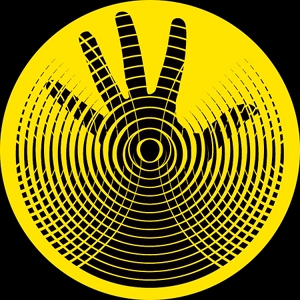Laurel Halo “Sunlight on the Faded”
When Laurel Halo released this year’s Quarantine LP on Kode9’s Hyperdub imprint, it certainly seemed […]

When Laurel Halo released this year’s Quarantine LP on Kode9’s Hyperdub imprint, it certainly seemed a little incongruous with the label’s image. While she had occasionally circled the umbrella of bass-oriented music that Hyperdub is known for, Quarantine had more in common with avant-pop of artists like Julia Holter and Grimes than cloudy syncopators like Terror Danjah or Burial. Even the Detroit techno-inspired elements of her previous EP, Hour Logic, were largely absent from the album, which favored befogged atmospherics and often eschewed percussive elements entirely. “Sunlight on the Faded” is Laurel Halo’s first single since Quarantine, and it finds her making an effort to unite the claustrophobic beats of Hour Logic with the strong vocal turns of Quarantine and early singles like “Metal Confection.”
The a-side, “Sunlight for the Faded,” combines dense techno and new age-indebted synths, with the occasional synth stab breaking through to ratchet up tension. When Laurel Halo’s voice comes in though, the vocal melody drifts atop the baroque textures and serves as a stabilizing element. “Only the best memories stay,” she sings, over a protean beat that could mimic amnesia. It’s a unification of ideas that works, even if it sounds more glued together than intertwined.
It’s Laurel Halo’s voice that’s always been a particularly contentious aspect of her work, and she does little to soften her delivery here—there’s no reverb to be found. Even the harmonies are almost willfully atonal, and come off as more confrontational than comforting. Compared to the lush, velvety sounds of her analog synths, the purposefully flat vocal affect has the potential to make the listener feel a bit woozy. Still, it’s a standoffishness that’s compelling in a genre where processed and obscured vocals are the norm, but it doesn’t make “Sunlight for the Faded” ideal for relaxing and zoning out.
The b-side, “Sunlight on the Faded (dub),” reworks the track without Laurel Halo’s vocals while leaving many of the electronic elements untouched in the first minutes. If the record’s sides are allowed to bleed together, the track almost feels almost like an extended coda. However, after a few minutes, the bass becomes pronounced and syncopated, low-register vocals move the composition closer to its parenthetical description. Together, the two versions highlight a cerebral artist who’s not afraid to needle the listener into digging deeper. And for those in search of a Laurel Halo track that really sounds like it belongs on Hyperdub, the b-side may be the closest they’ll ever get.

